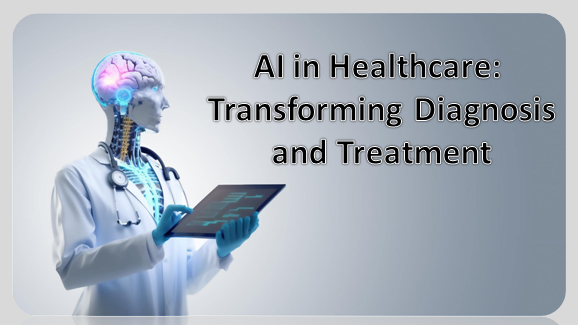The engineering and science process of creating intelligent machines using algorithms or an array of rules that the computer adheres to in order to imitate human cognitive processes, such as learning and solving problems, is known as artificial intelligence (AI). With the ability to foresee issues or address them as they arise, AI systems can act with intention, intelligence, and adaptability. The term “artificial intelligence” (AI) refers to a number of subfields (including machine learning as well as deep learning) that, when used individually or collectively, give applications a more intelligent appearance.
The ‘quadruple objective’ for healthcare—improving population health, patient experience of treatment, provider experience, and lowering the steadily rising cost of treatment—presents considerable problems for healthcare systems worldwide. Some of these issues could be resolved by leveraging technologies & artificially intelligent technology (AI) in the healthcare industry. When combined with technological advancements in mobile, the internet of things (IoT), computing power, and data security, the growing availability of multiple types of information (genomics, economic, demographic, clinical, and phenotypic) signals a moment when healthcare and technology will fundamentally alter models of healthcare delivery by means of AI-augmented healthcare systems.
Medical Imaging, Disease Detection, and Diagnosis
The use of AI to support medical practitioners in the diagnosing process could be extremely beneficial for the healthcare industry and patients’ overall health. Identifying whether a patient has a disease or not is the primary objective of a disease diagnosis. Getting a full medical history and doing a physical exam are the initial steps in the diagnostic procedure. For instance, a method can use analysis of sound to identify COVID-19 from various respiratory noises, such as voice, cough, and breathing. AI algorithms can also be used to analyze pathology and medical imaging in order to make a precise diagnosis. Ejection fraction through echocardiograms is one of the imaging applications.
Personalized Medicine and Treatment Planning
AI tools are capable of pattern recognition and data analysis on a massive scale. They are able to predict effective and individualized treatment plans as a result. As a branch of the medical sciences, personalized medicine uses clinical decision-making and practice to provide patients with individualized healthcare [30]. CURATE is an illustration. Based solely on that person’s data, AI is an AI-derived system that corresponds the connection between a treatment magnitude (input-drug) and a physical result (output) for that person. This platform then creates a profile that provides a map to foresee the outcome for a given input and to endorse the level of treatment intensity that will produce the best result.
Drug Development and Discovery
The pharmaceutical business has been using AI more and more, which has led to a reduction in human workload and quick achievement of goals. AI can identify hit and leading compounds, as well as expedite therapeutic target validation and structural design optimization. Insilco Medicine released a promising top line readout of their phase 1 safety and pharmacology trial of the drug INS018_055, created by AI for the degenerative condition known as idiopathic pulmonary fibrosis, which results in scarring of the lungs, in January 2023.
Analytics for the Future and Risk Assessment
The process of determining a person’s likelihood of contracting a certain disease based on risk variables such genetic predispositions, exposure to the environment, and lifestyle decisions is known as disease risk assessment. Clinical genomic analysis involves a number of phases, such as variant calling, genome annotation, variant categorization, and phenotype-to-genotype correspondence. AI approaches have been implemented to handle these steps, and potentially in the future they will also be used to anticipate genotype-to-phenotype relationships. Furthermore, Ramazzotti et al. used AI to examine multiple forms of biological data, including RNA expression respectively, point mutations in methylation of DNA, and omic information concerning copy number variation, to successfully predict the prognosis for 27 out of 36 malignancies. The Cancer Genome Atlas, or TCGA, provided the data for the analysis.



